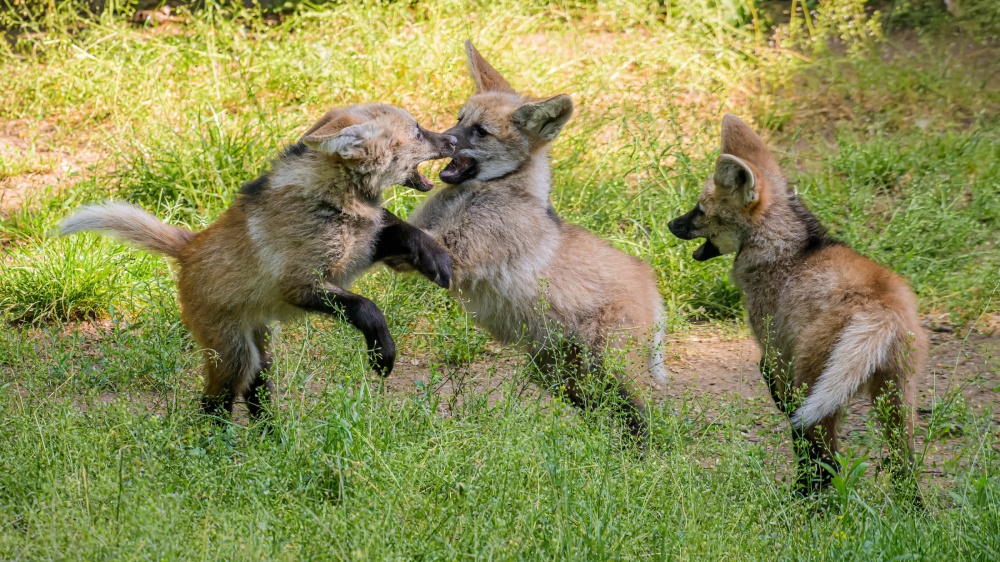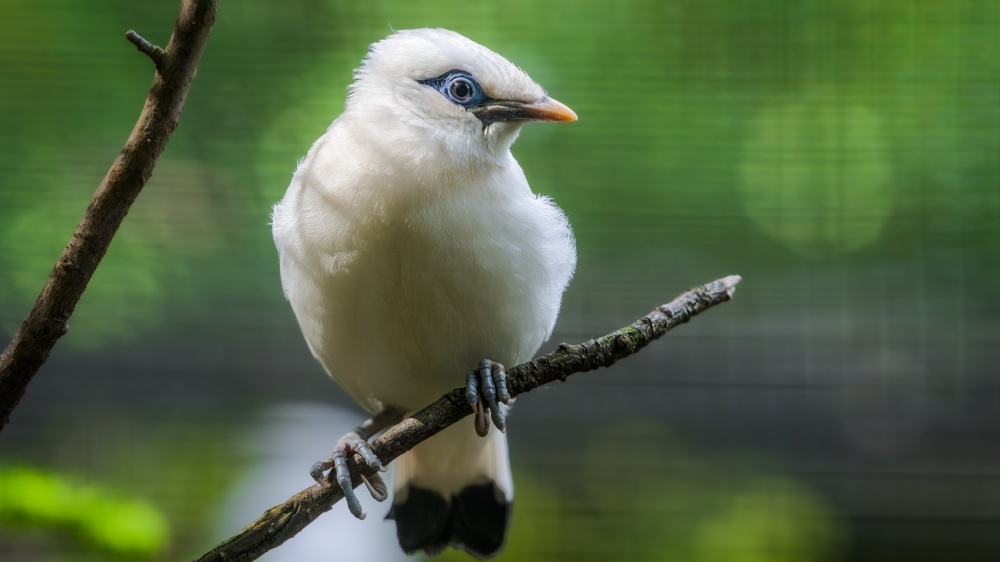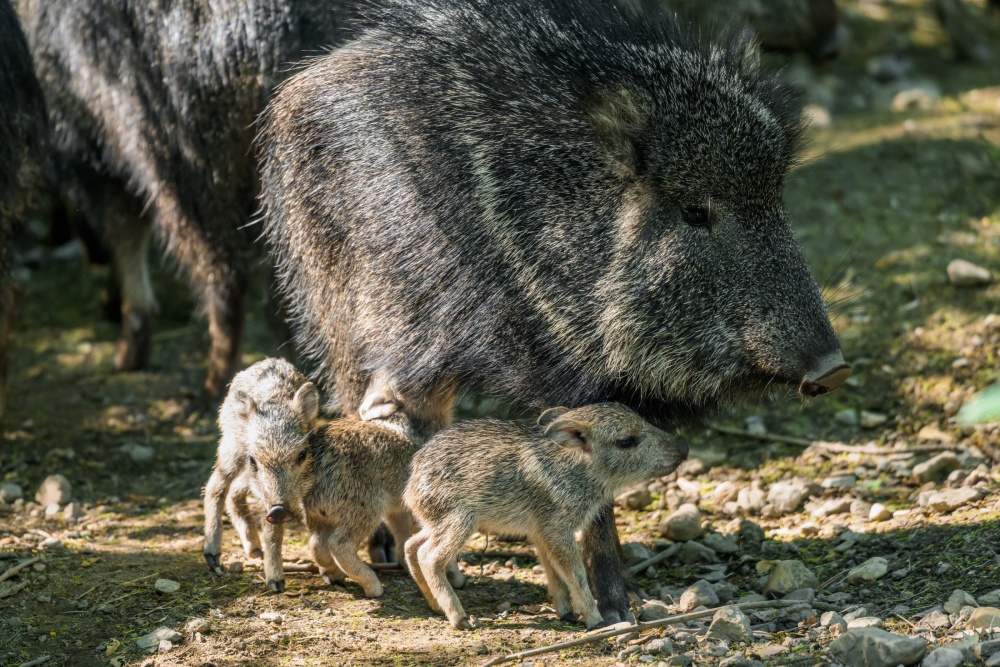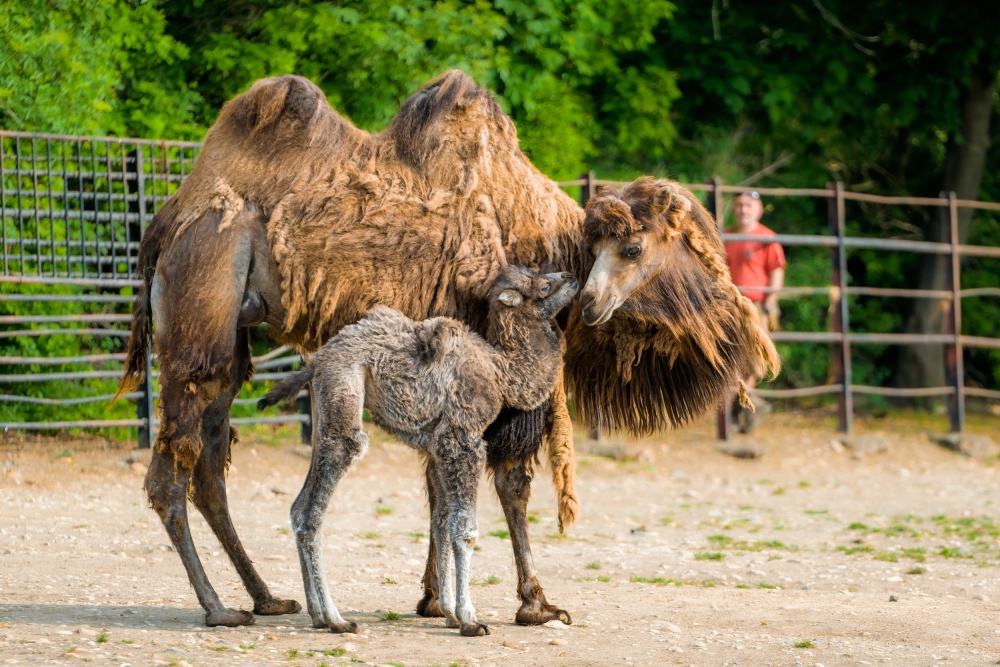PENGUINS, RARE PIGLETS AND PHEASANTS THAT ARE EXTINCT IN THE WILD. SPRING AT PRAGUE ZOO IS A BABY BOOM
23. 05. 2022
The young penguins are learning to swim, the wolf triplets are starting to venture further from the den, the guanaco was born right in front of the visitors. Prague Zoo is full of youngsters and not just from these well-known and popular species, but also some of the highly endangered ones that are crucial for breeding – the Chacoan peccary, Bali myna or Edwards’s pheasant.

The first offspring of the new breeding pair of maned wolves – Luna, a two-year-old female, and Váňa, a three-year-old male - are already romping around in front of visitors. Photo Petr Hamerník, Prague Zoo
“Since the beginning of this year, Prague Zoo has already seen the birth of 267 young from 81 species of mammals, birds, reptiles and amphibians. And that's not even counting all the small invertebrates,” said Miroslav Bobek, Prague Zoo’s director, relishing the results of the zoo’s breeding efforts. “Understandably, the most valuable are those youngsters that give their species a hope of survival. This is where modern zoos play a key role.”
Prague Zoo has managed to breed several such species this year. For example, seven Edwards’s pheasant chicks have hatched. According to the IUCN Red List, this Vietnamese pheasant is a critically endangered species, with some scientists even claiming that it has already disappeared from the wild altogether.
An almost identical fate befell the Bali myna. This intriguingly coloured songbird became extinct on the Indonesian island of Bali due to deforestation and hunting. However, thanks to the hard work of conservationists and zoos, the species has been preserved on the planet. Prague Zoo had a significant part in this, the first chick was bred here in 1977 and this year’s chick is a jubilee – it is exactly the 200th to be hatched.

Prague Zoo is one of just two Europe breeding facilities that can now add the label of a regularly breeding species to the endangered Chacoan peccaries. This year, four piglets were born. Paradoxically, this species was first described for science based on fossil finds and it wasn’t until 1972 that a small population was discovered in a dense forest on the border of Argentina and Bolivia.

The May Day addition was a male Bactrian camel born to the three-year-old female Fidorka. Only a little more than a week separates the two half-siblings of the guanaco, whose birth directly in the enclosure could be witnessed by watchful observers. The younger one was born last week on Friday afternoon, while the older one is now eleven days old. So, how did the birth go?
“It was very quick and completely trouble-free. The little guanaco came into the world within half an hour, in another half an hour she was walking and joined the rest of the herd who were all very curious,” said Barbora Dobiášová, the ungulates curator. She is also happy about the young male camel. “It was Fidorka’s first birth, so naturally there was a bit of anxiety. However, the young Bactrian camel is also in excellent health, as is its young mother,” she said, adding that people will be able to see both closely related mammals in the upper part of the zoo.

Patient and, especially, quiet visitors are rewarded at the maned wolf enclosure. The three cubs born in March to this long-legged South American carnivore are already overcoming their timidity and moving further and further away from their outdoor den under the watchful eye of their parents. The same goes for the Humboldt penguins. The two seven-week-old chicks are now becoming familiar with the water and are slowly joining the rest of the flock that has nearly 30-head.








